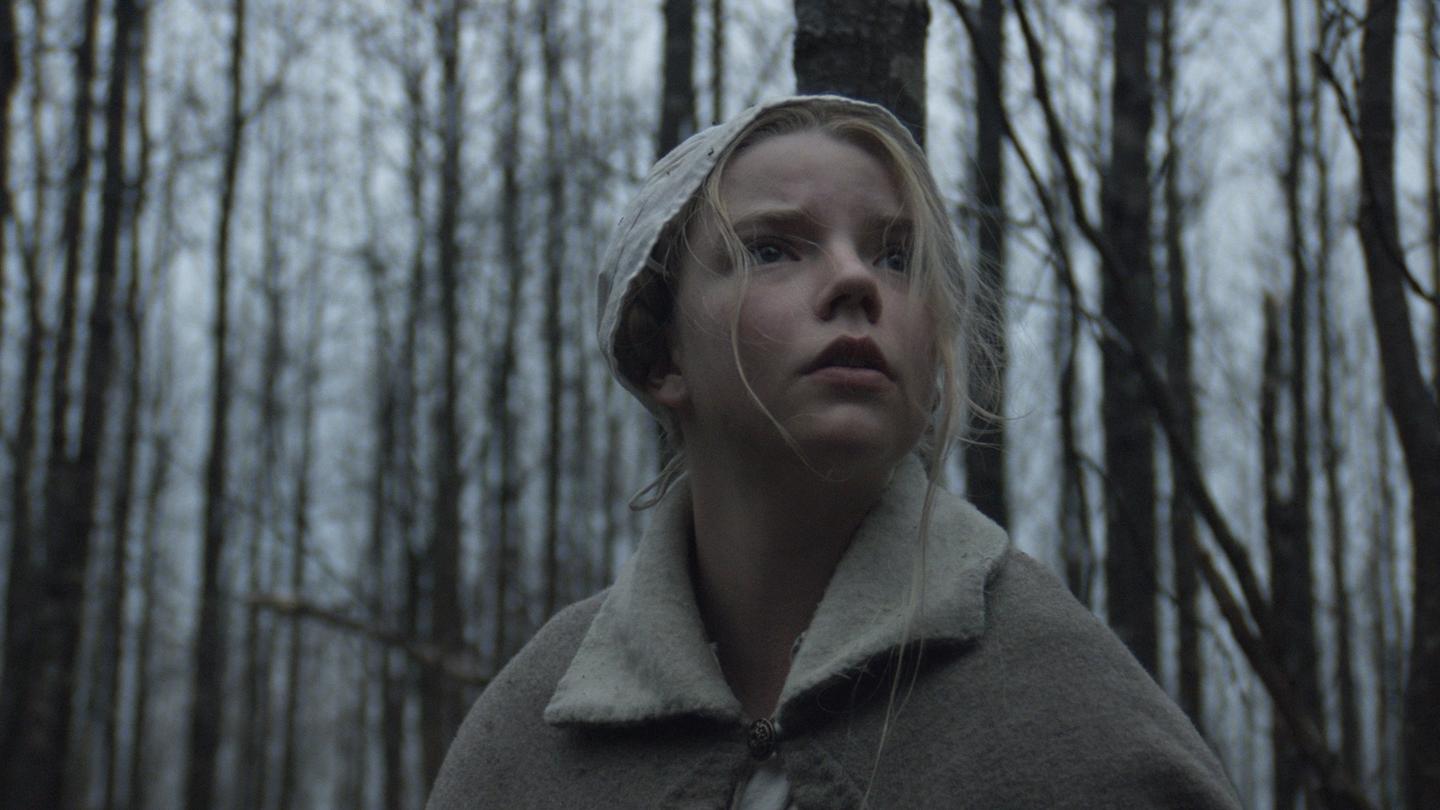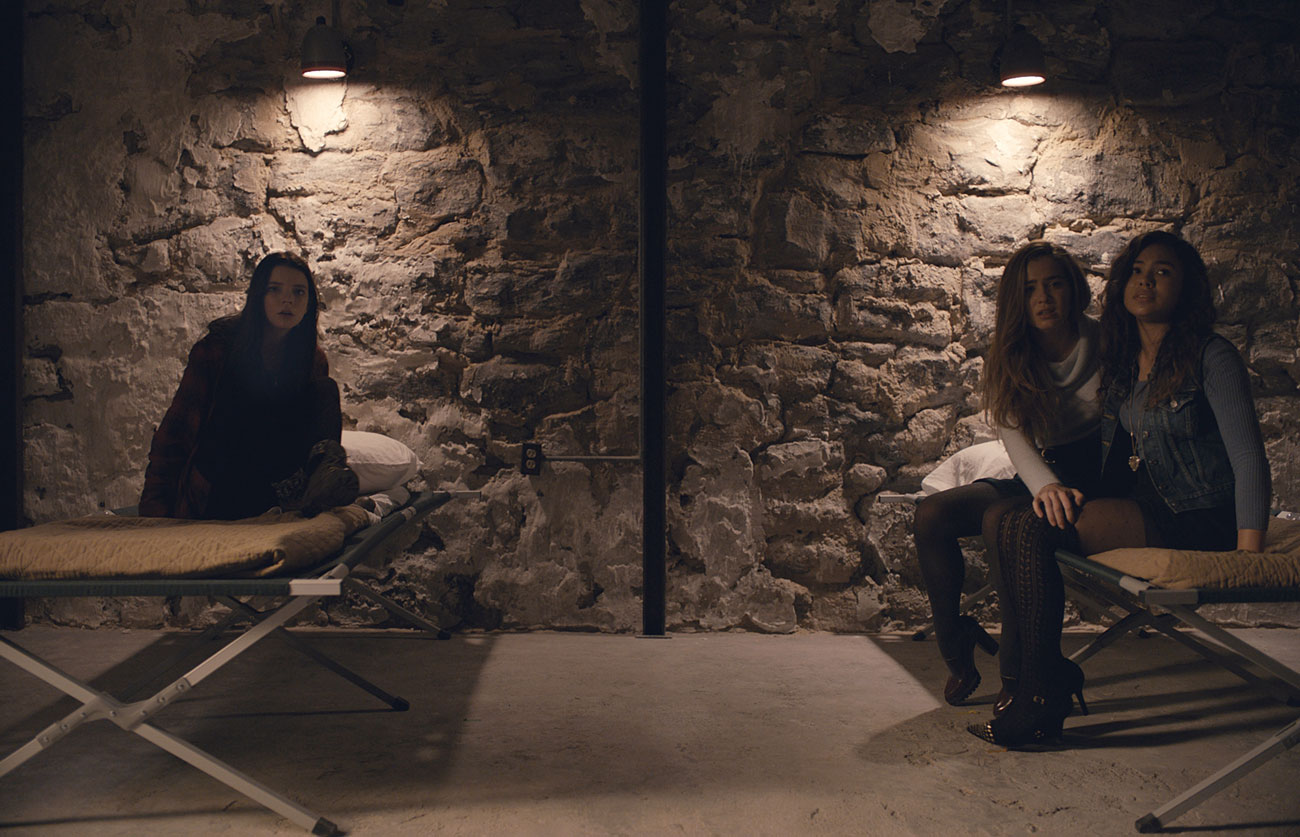“I have no skin,” says Anya Taylor-Joy, scrunching up a huge pillow against her chest. “I can walk into a room and pick up on the energy of everybody else, and I’ll just take it on – I can’t help it.” The 20-year-old actor is explaining how empathy helps her work. “I feel something really intensely and the intensity of my emotions is a blessing and a curse.” I tell her that I’ve always felt similarly. She nods and says, “You’re an empath, too.”
By empath she means the new age term for highly sensitive people who feel the ailments of others – emotions, pain, thoughts – as if they were their own. Believe in that or not, as audiences and filmmakers are quickly realising, Anya is a very good actor – and one who didn’t study at RADA or Sylvia Young. So whatever intuition she’s drawing from to create a character, it works.
Videos by VICE
“As a kid I’d consistently go up to my mum and say, ‘Why am I different? Why do I feel this way? Why do I see a flower and start to cry?’ She was always sweet about it because it used to really freak me out when I was little. People see sensitivity as a weakness, rather than a strength. I don’t like that interpretation of it because does it mean that you’re a bit more weepy and susceptible to things? Yes. But I see that as something beautiful.”
There’s a link here with the characters she’s chosen to play so far. Thomasin in The Witch; Morgan in Morgan; Casey in new film, Split: they’re all delicate but hard through necessity, through not being understood by outside forces. Anya’s face has an unreadable quality, but there’s always emotion trembling just under the surface – a quality that makes you care immensely for her characters.

Still from ‘Split’
We’re invested in part because she cares for them, too. “It’s fierce love,” she says. “It’s almost worrying because I know they’re technically not real people but they’re real to me. I find it difficult to stand up for myself at times, but I very easily defend my friends. And now, you do not fuck with my characters. I am so fiercely protective over them.”
Anya is the youngest of six siblings, all much older than her – adults when she was a child. Her Scottish-Argentinian father was a champion powerboat racer. Her mother is a trained psychologist, with a “Stevie Nicks personality, artistic with a big heart”. Spending time around adults she was trusted as one of them. At 16 she told her parents to leave her in the family home in London so they could could go on a belated long-term honeymoon. From then she lived alone, and shortly after wrote her parents a letter (“it was actually more of an essay with introduction, conclusion, everything”) about why she was dropping out of school to be an actor. Days then consisted of homeschooling herself for fun and doing some modelling.
Her break came on a modelling shoot for LOVE Magazine with the cast of Downton Abbey. She innocently read Irish actor Allan Leech some Seamus Heaney; amazed, he passed her on to his agent, who now represents her. When she read the script for The Witch, given to her by her new agent, she says it felt like having a panic attack. “I’d never experienced that feeling before. Now, with hindsight, I know that’s the feeling I get when a script is meant for me,” she says. “Then when I walked into the room to meet Rob [Eggers, the director], I just said, ‘I can’t remember my lines, I haven’t worked on the accent and I’m having a full-blown panic attack – do you still want me to read?’”

Still from ‘The Witch’
The Witch (2015) is a tale of a family in 1630s New England torn apart by witchcraft. The action happens in the darkest of winter, during which the family are near-starving. The relatively small budget and the fact that Eggers wanted it all shot in natural light meant Anya was hands on for her first film. “Summer was coming and at one point we were picking the buds off the trees, like, ‘Fuck! This is supposed to be desolate!’ I didn’t know any different. Looking back on it now, having made so many others, I’m like, ‘Fuck, that was gruelling!’ We were battling everything. The elements, the money situation, the time constraints, the kind of epicness of what Rob was doing.”
Morgan (2016) was similarly challenging, albeit in a different way: “I was in a room on one side of soundproofed glass watching everyone and being completely disconnected from them. It was so hard – I felt really lonely and isolated. I need affection to survive, I really do.”
It was through the glass and the tight shots of Thomasin’s face that seem to make up most of The Witch that Anya became a “one-to-watch”. But she was unknown to M Night Shyamalan before he cast her as a lead in Split, his new psychological horror. She plays an outsider teen who gets kidnapped, along with two other girls, by James McAvoy’s character, Kevin, who has Dissociative Identity Disorder. There have been some understandable question marks over how realistic or sympathetic the depiction of mental illness is in this film (probably neither), but what can’t be denied is that the performances are outstanding.
In a back-and-forth between Shyamalan and Anya for Interview, the director and writer told her, “I could do take after take after take, and you seem to have an unending pool of emotion. That’s very unusual. You’re like an exposed, raw nerve.” She nods when I ask her if she agrees with that analysis. “Night was the first person that made me aware of craft. I’m so instinctive that I just sort of do it. However, I now know there’s a well, and once I’ve hit that well I will not stop crying. That makes people really uncomfortable just because there’s nothing men are more afraid of than a crying woman.”

Still from ‘Split’
“The first time it ever happened was on The Witch, and it’s the scene where I’m grappling on the floor with my mother. On the film I did most recently there was one day where I just cried for about nine hours. That was pretty intense. I felt lighter at the end; I always feel like I’ve released something and I can go to bed and be relaxed.”
The emotional labour doesn’t end once the film wraps. “Thomasin was heartbreaking, actually, because we finished the film and I went to New York and I was so depressed – I couldn’t understand it,” says Anya. “I was trying to put it to something and thought, ‘It’s not about the guys. I’m going to see them for lunch in an hour.’ It was that I miss her. She’s been ripped away from me. I sort of felt: I’ve lost her and was never going to be able to get her back. It’s been easier with each of them because your first cut is the deepest.”
Before hugging and waving me goodbye, she tells me that she keeps Thomasin’s garters and her ribbons in her backpack as a good luck charm. She has kept an item of clothing from each character she’s played. From Split she took the bralette but left her own jewellery, which by the end felt more like Casey’s than hers. “I see them all as these spirits that don’t have a body and they’ve trusted me to tell their story. I have to tell their stories right.”
More on film:
‘The Witch’ Is a Kick In the Balls of Patriarchy
‘I Was an Emo Trapped In a Frat House’: An Interview with the ‘Donnie Darko’ Director




